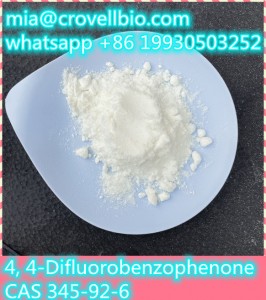Chloramphenicol
Basic Info
Product Name:Chloramphenicol
Synonym:Acetamide, 2,2-dichloro-N-[2-hydroxy-1-(hydroxymethyl)-2-(4-nitrophenyl)ethyl]-, [R-(R*,R*)]-;Acetamide, 2,2-dichloro-N-[beta-hydroxy-alpha-(hydroxymethyl)-p-nitrophenethyl]-, D-threo-(-)-
CAS:56-75-7
MF:C11H12Cl2N2O5
MW:323.13
EINECS:200-287-4
Appearance: White Powder
Purity:99%
Appearance: White to grey-white crystalline powder
Usage: antibacterial, antirickettsial, inhibits protein synthesis
Usage: Chloramphenicol is unusual nitroaromatic metabolite produced by Streptomyces venezuelae, first published in 1947. Chloramphenicol is a broad spectrum antibiotic with good activity against Gram negative and anaerobic bacteria. Although restricted to ocular use, antibiotic resistance to other classes has refocused attention on this class. Chloramphenicol acts by binding to the 23S sub-unit of the 50S ribosome, inhibiting protein synthesis. Chloramphenicol has been extensively studied with over 35,000 literature citations.
Usage: Broad spectrum antibiotic obtained from cultures of the soil bacterium Streptomyces venezuelae. It has a broad spectrum of activity against Gram-positive and gram-negative bacteria. Antibacterial; antirickettsial.
Description
Chloramphenicol also known as chloromycetin, is produced by chlorine streptothrix which can inhibit bacteria growth effect of the broad-spectrum antibiotics, natural chloramphenicol is left-handed (also known as levomycin). The synthetic product is white or yellow acicular or flake crystal, odorless, bitter taste, slightly soluble in water, soluble in ether and chloroform, methanol, ethanol, acetone or ethyl acetate, insoluble in benzene and petroleum ether. In neutral or weak acidic solution is stable, easy to failure with alkali. The synthetic product is racemic, also called synthomycin. Syntomycin is a mixture of chloramphenicol L-isomer and d-isomer. Because of dextroisomer antibacterial effect, the effect of synthomycin is only half of the natural products. Chloramphenicol has inhibited on Gram negative bacteria, gram positive bacteria. It can be used for treatment of typhoid, dysentery, urethral infection, pertussis, pneumonia, septicemia diseases. But there is damage to the liver, and the dosage should be strictly prescribed dosage. Chloramphenicol palmitate does not dissolve in water, oral is tasteless, also known as chloramphenicol palmitate. Taking the intestine is adipose decompose enzymatic hydrolysis and release of chloramphenicol. Chloramphenicol palmitate contains around 60% chloramphenicol, so taking dose should increase two-thirds. Especially that is suitable for children taking. Containing 1% of chloramphenicol ointment can be used for the treatment of eye and skin infections. In agriculture, it mainly used on bacterial diseases of plants, such as rice bacterial blight, and within the ceiling effect is strong, having security for plant.
Application
Chloramphenicol is on the World Health Organization's List of Essential Medicines, a list of the most important medications needed in a basic health system.The most serious adverse effect associated with chloramphenicol treatment is bone marrow toxicity, which may occur in two distinct forms: bone marrow suppression, which is a direct toxic effect of the drug and is usually reversible, and aplastic anemia, which is idiosyncratic (rare, unpredictable, and unrelated to dose) and generally fatal.
Because of its excellent blood-brain barrier penetration (far superior to any of the cephalosporins), chloramphenicol remains the first-choice treatment for staphylococcal brain abscesses. It is also useful in the treatment of brain abscesses due to mixed organisms or when the causative organism is not known.
Use of intravenous chloramphenicol has also been associated with gray baby syndrome, a phenomenon resulting from newborn infants' inability to metabolize chloramphenicol in the body. Other less serious reactions include fever, rashes, headache, and confusion. Prescription use is usually associated with monitoring of a patient's complete blood count. The drug should be discontinued upon appearance of reticulocytopenia, leukopenia, thrombocytopenia, anemia, or any other abnormal blood study findings attributable to chloramphenicol. Although unpublished, recent research suggests chloramphenicol could also be applied to frogs to prevent their widespread destruction from fungal infections.It has recently been discovered to be a life-saving cure for chytridiomycosis in amphibians.
Uses
1. A broad-spectrum antibiotics,it is the drug of choice for the treatment of typhoid, paratyphoid, one of the effects of drug treatment of anaerobic infections. Second, it is used for the treatment of various microbial infections caused by sensitive diseases. Because serious adverse reactions are less and less.
2. The antimicrobial spectrum, role and purpose were the same as chloramphenicol.
3. Used for the treatment caused by typhoid bacillus, dysentery bacillus, Escherichia coli, bacillus, influenza and pneumococcal infections such as brucellosis.
4. Antibiotic anti infection drug.
contact information:
Whatsapp:86-18873303856
skype:live:d260a58b346fba38
email:majorina.cai@chembj.com
TEL:+86 18873303856













 Product quality protection
Product quality protection 







